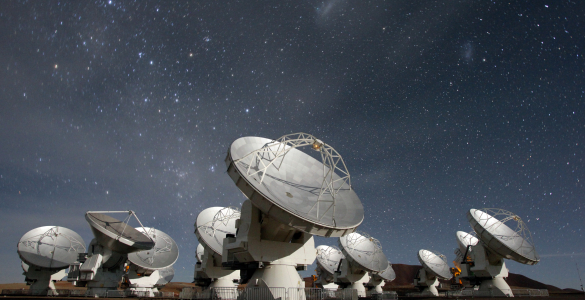Latest NRAO News
News is managed by NRAO News & Public Information. Questions about News? Have a story to share? Want to interview a scientist or create new media about our telescopes?

The U.S. National Science Foundation National Radio Astronomy Observatory (NSF NRAO) is thrilled to invite the public to the NSF Very Large Array (NSF VLA) Fall Open House on Saturday, October 12, 2024, from 9:00 am to 4:00 pm.

The Atacama Large Millimeter/submillimeter Array (ALMA) new observation cycle –Cycle 11- kicks off on October 1, 2024, starting a…

From the early telescopes made hundreds of years ago by Galileo to the sophisticated astronomical observatories of today, people…

The Atacama Large Millimeter/submillimeter Array (ALMA), one of the largest and most sensitive telescopes of its kind in the…

Traditionally, planet formation has been described as a “bottom-up” process, as dust grains gradually collect into bigger conglomerations over…

Wireless technology is central to our modern world. You may be reading these words on a smartphone or tablet…





